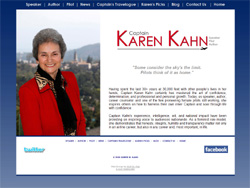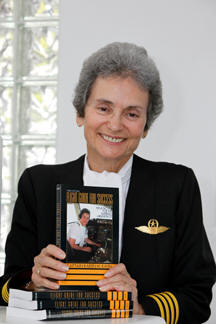#2 of My Series: Behind the Cockpit Door
In my last blog we talked about having too much fuel…now let’s
discuss what happens when you’ve put it in the wrong place…
Just when you think you’re comfortable and have the fuel
you need, things can get tricky. You may
think that figuring out how much fuel you need is all you have to worry about, but
that still leaves the big concern of making sure the airplane gets fueled with
that amount, and finally, is it in the right place?
I learned my lesson one morning departing Houston for Los
Angeles with what appeared to be plenty of fuel for the planned flight. Our gauges in the Boeing 757 have a digital
totalizer which is what I looked at to confirm that we did, indeed, have the
required fuel, 37.5 (or 37,500 pounds). Thinking all was well, I went back to checking the rest of
my instruments and reviewing the weather for the planned flight. Once the main cabin door was closed, we began
our before pushback checklist which starts with the item “Fuel.” Looking more closely at the 4 gauges (one for
each wing tank, one for the center and one giving the total of all three
gauges), I saw my error.
The total quantity of 37.5 was fine, but the location of
the fuel was not. Proper procedures call
for filling the wings to capacity first, then putting the remaining fuel in the
center tank. This had not been done
correctly and I’d failed to notice the problem: the fuel in the center tank
needed to be moved to fill the wings until they were full; only then could the
rest of the fuel be put into the center tank.
We could not depart the gate in
this condition, so I now called Maintenance, asked them to send a fuel truck
and a mechanic who could make the transfer using special valves installed in
the fueling panel under the right wing.
I also had to explain the delay to the passengers since we
would not be pushing back from the gate until the fuel transfer was
complete. Embarrassed, but following my
“honesty is the best policy” motto, I explained the situation and told them I
expected the delay to be minimal. As a
matter of fact, because we were delayed in leaving the gate and missed the
morning westbound flight rush hour, we actually got out to the runway a bit
sooner than some of the other airplanes who had been ready to leave at the same
time.
Since we were able to take our delay at the gate rather than on the tarmac
(a term, by the way, which pilots rarely use...they say, instead, ramp or taxiway, depending on where we are located) we avoided the tedious stop-and-go process and taxied directly to the departure runway where we were cleared for takeoff without delay. It was a nice reward after feeling chagrined at my dumb mistake and a good reminder that it always pays to read the gauges carefully, not just look at them in haste.





